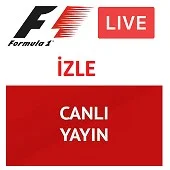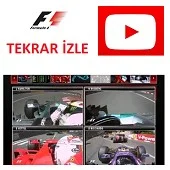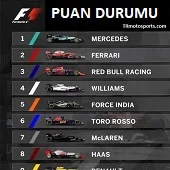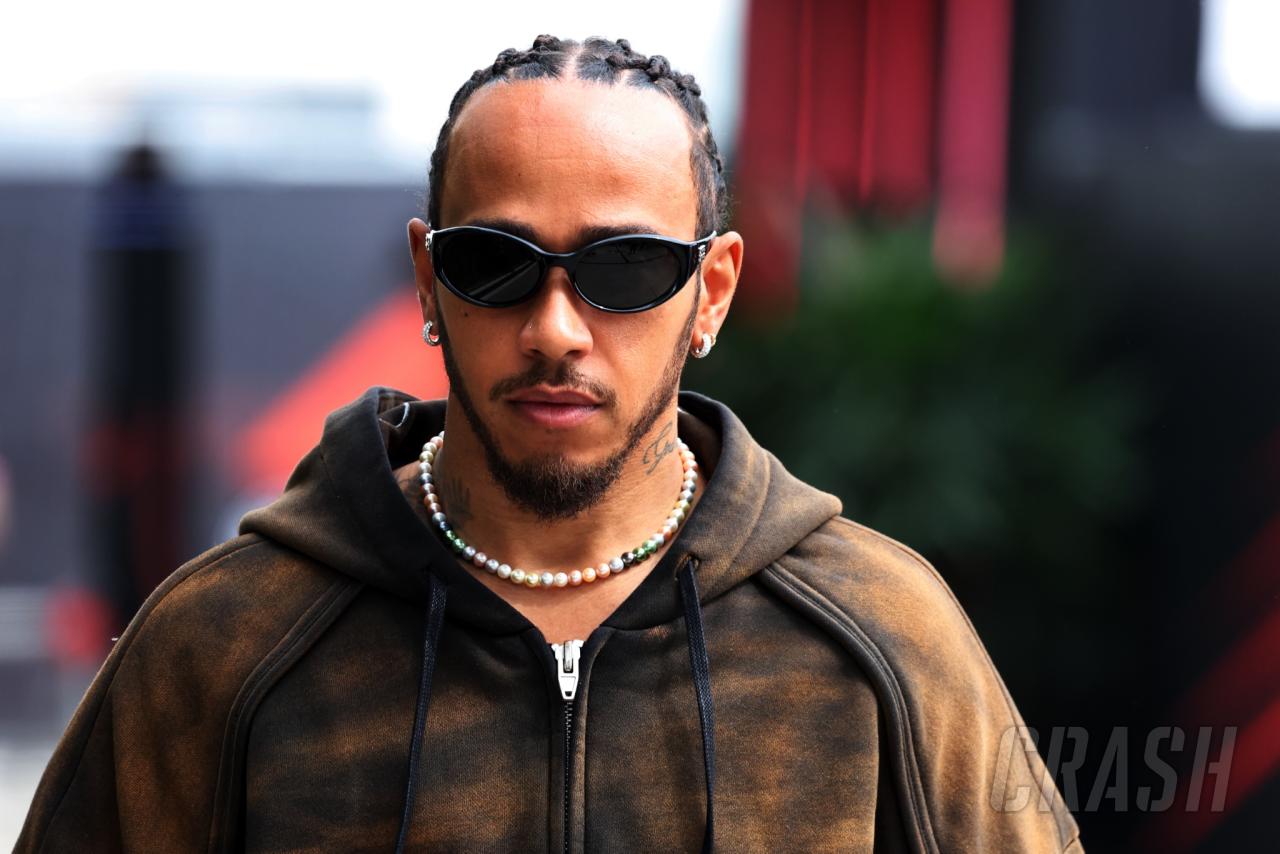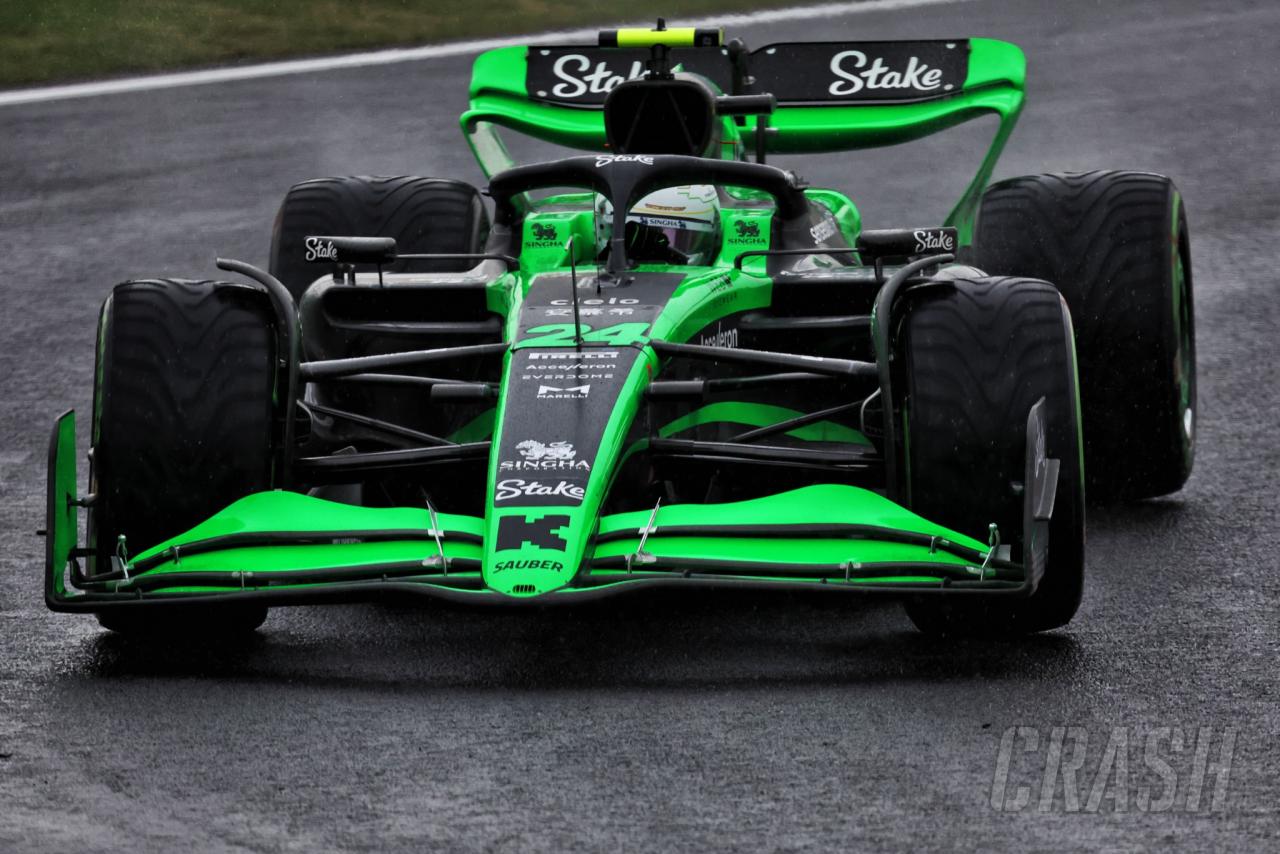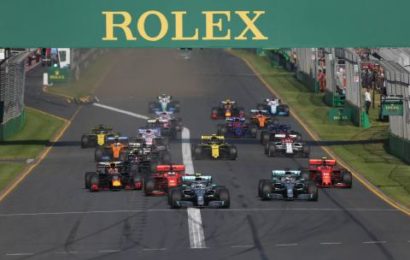
Will F1's London meeting edge its 2021 vision closer to reality?
| F1 Live | F1 Replay | F1 Standings |
Formula 1 bosses will meet in London on Tuesday for a crunch meeting in a bid to outline the sport’s future and make steps towards a final agreement for 2021 – but will it bring the breakthrough desired?
Almost a year has passed since F1’s commercial rights holder, Liberty Media, made a presentation to team bosses at the Bahrain Grand Prix outlining its key proposals for 2021. Yet we are still without a final picture of what the future sporting, technical, or commercial landscape will look like.
While we have heard many ideas and seen concepts of what form the F1 grid may take in 2021, nothing is for certain. At present, none of the teams are signed up to race beyond the end of the 2020 season, and until they know just how the land will lie, planning is proving extremely difficult.
cmgAdQueuePush( function(){ AccelerateAdManager.displayAd(“ad-mpu-1-mobile”); });
That is why so much rests on Tuesday’s meeting in London. While political war rages only a stone’s throw away at the Houses of Parliament amid the UK’s own sticky negotiations in its departure from the European Union, F1 will be hoping to avoid triggering its own crisis.
The state of play is broadly unchanged from how it was a year ago: the commercial rights holder has plans for the direction in which it wants to take the sport, yet the teams – without whom there is no sport to take in said direction – won’t be led blindly. All 10 have their own ideas of how F1 should look moving forward, with their main sticking points surrounding money and revenue.
F1’s unequitable approach to sharing out revenue to teams via prize money and other bonuses has been a big point of contention in talks. While the smaller outfits are naturally chasing a bigger slice of the pie, the big boys – and particularly the biggest of all boys, Ferrari, whose long standing team payment stands at over £50m per year – are uneasy about giving up some of the benefits that have long enjoyed.
cmgAdQueuePush( function(){ AccelerateAdManager.displayAd(“ad-mpu-2-mobile”); });
One senior F1 official privately expressed his frustrations to this writer about “the cauldron of self-interest” that was being negotiated through these talks surrounding revenue distribution – but it is a fine tightrope that has to be treaded on carefully.
“Revenue distribution should be more balanced, should be performance oriented,” McLaren CEO Zak Brown recently told The Guardian. “To a lesser degree than today there should be recognition for your history. We all agree Ferrari is the biggest name and should be remunerated as such, but not at the level that it is.”
The hope is that a fairer share of revenues will help to create a more competitive F1, giving more teams a chance to fight for race wins and championships. We’ve seen in the Premier League, where massive TV deals led to huge budgets for all teams and a far bigger slice of revenue, how equitable shares of income can make for a more competitive league.
cmgAdQueuePush( function(){ AccelerateAdManager.displayAd(“ad-mpu-3-mobile”); });
While familiar teams remain at the head of the league, Leicester City proved that shocks are possible, while the battle throughout the mid-table runs all the way to the bottom of the league. For the 2017-18 Premier League season, West Bromwich Albion brought in the lowest level of revenue at £96.4m, which is 62 percent of what the biggest earner, Manchester City, received. By comparison, Sauber only took home 27 percent of Ferrari’s F1 payout in 2018. The need to rebalance the scales is clear.
For F1, one commercial matter where there is consensus is a cost cap. Its form is again widely debated, with a glide path over the coming years appearing to be the most likely course of action to gradually brings costs down and appease the bigger spenders. But even the likes of Mercedes recognise there is a need to keep costs under control.
“Mercedes is certainly interested in having a cost cap implemented at the right levels so that it makes sense for everybody: get the big teams on board in a way that is implementable, and cap us to make sure we are not running away with it with higher costs each year,” Mercedes F1 chief Toto Wolff said.
cmgAdQueuePush( function(){ AccelerateAdManager.displayAd(“ad-mpu-4-mobile”); });
“Regulations are another building block that is important to get over the line before June. Let’s see how it goes after next week, but what I hear is making it optimistic.”
The June 30 deadline for the regulations is outlined by the FIA’s International Sporting Code, which states that changes agreed would come into force “no earlier than 1st January of the second year following their publication” (2021). While the rule is written with the intention of giving plenty of lead-up time before any major changes, the delays in getting plans agreed or finalised mean it is now concerningly imminent, with just one FIA World Motor Sport Council meeting left, on June 14, at which any plans can be ratified.
But FIA president Jean Todt and F1 CEO Chase Carey were both optimistic of the chances of getting a final package on the table for teams at the London meeting.
“We should be ready with the global package,” Todt said. “The global package is on one side, the commercial side, financial side, which is the responsibility of Formula 1. We have the cost control, which is a new initiative which is quite well advanced. We have engine regulations which have been sent to the teams a few days ago, and we have chassis regulations, and we have the governance.
“Those are all the different chapters on which we are working, and we should be in a position to have a finalised package to discuss with the teams on March 26.”
Carey added: “I think we’ve made good headway. I think there is a general agreement and direction that we’re heading with everything. You get into the details, and if you’ve got 10 teams, you’ve got 10 different views of the details, so that’s part of what thrashing this out is.
“It’s not unique in the world to try and find the right compromises. But I think directionally, we’re excited about the opportunity to really provide a platform that the sport can really from 2021 really take off.”
There has been a need to compromise for the teams, but also for F1’s bosses. Looking at the original proposals laid out in Bahrain last year, plans such as power unit revisions and trying to attract new manufacturers have gone quiet. Maintaining the quality of the current grid has instead become the focus – which is not necessarily a bad thing – but a swift resolution is now crucial to ensure that happens.
“We get to the point where we know what is going to happen in the future, otherwise we cannot run our business,” Haas team boss Guenther Steiner said.
“In F1, you cannot start to develop with no technical regulations, and for us everything starts at least a year or 18 months early. We are only 21 months away from the new [regulations] so we haven’t got a lot of time left.
“I think they realise that, so we need to come out with something and let it be what it is.
“There are a lot of things: the governance, the commercial agreements, the budget cap, the technical regulations.
“If we get it all done in one meeting then good for us. But good luck…”
Tuesday’s London summit may not be the final make or break moment for F1’s future, but it will be the first major act for talks in the coming weeks and months that will ultimately define what the sport post-2020 world looks like.
F1 prize money data via racefans.net. Premier League prize money data via Sporting Intelligence.
For motorsport news follow TRmotosports on social media.
Facebook: https://www.facebook.com/TRmotosports
Twitter: https://twitter.com/TRmotosports
Instagram: https://instagram.com/trmotosports/
Linkedin: https://www.linkedin.com/company/trmotosports-com
